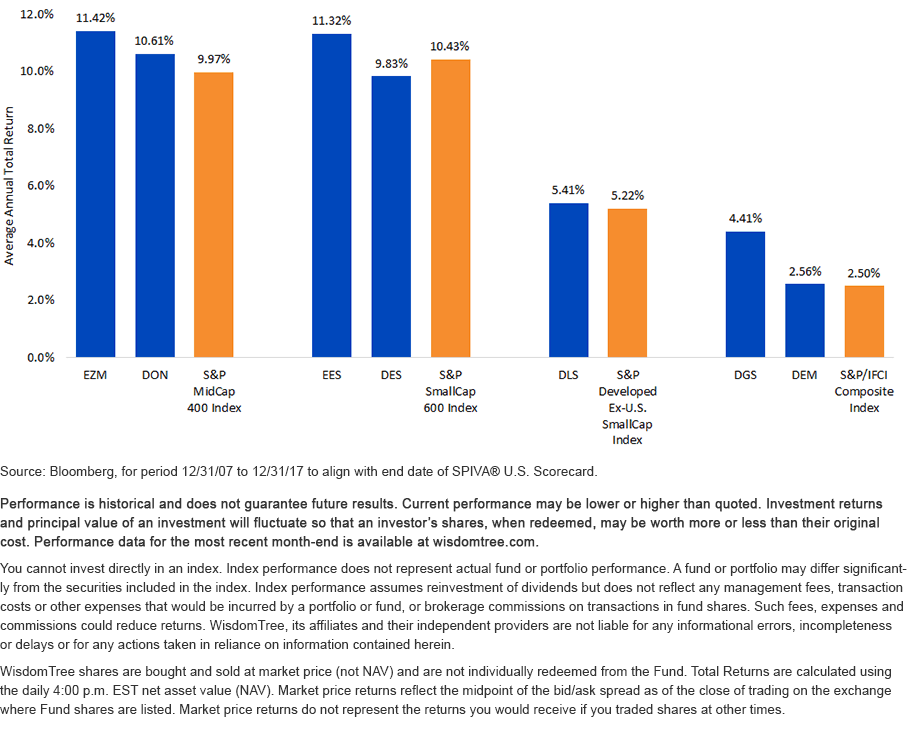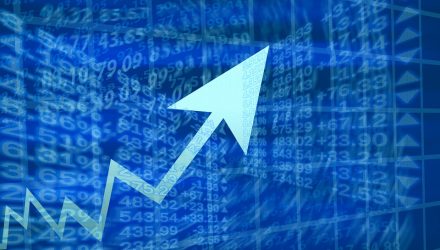Of all equity asset classes tracked in the report, international small-cap funds had the highest hit rate, with just over a quarter (27.45%) of managers beating the benchmark over the last decade. It should be noted that the report used the S&P Developed Ex-U.S. SmallCap Index as a benchmark for international small caps instead of the more commonly followed MSCI EAFE Small Cap Index, which was a more difficult bogey to beat than the S&P Index. A similar but less flattering story existed in EM, with 14.86% of funds beating the Index (using the S&P/IFCI Composite Index, which outperformed the MSCI EM Index).
These numbers lend credence to the idea that, while it is more likely that an active manager can outperform in international markets, only a select handful actually have done so. Fees undoubtedly play a role in the results, as on an asset-weighted basis, actively managed equity mutual funds on average charge 0.78%1—and typically much more than that in the more esoteric, inefficient markets.
Active Approach at a Lower Cost
Similar to many active managers, we believe at WisdomTree that our fundamental approach of weighting by dividends or earnings typically can have greater excess return potential in the perceived inefficient markets. The key differences are that we implement our research passively, in a rules-based process, and through the beneficial ETF vehicle – all of which help drive down costs for investors.
Related: It’s Time to Fix Your Undiversified Portfolio
True to form, many of our long-term flagship products outperformed their benchmarks and peers in a decade that saw significant struggles for non-index funds. Of every WisdomTree ETF with a 10-year track record in the inefficient equity asset classes covered above, all but one beat the comparable index used in the SPIVA report (the WisdomTree U.S. SmallCap Dividend Fund (NYSEArca: DES) was the only one unable to overcome the headwind of value underperformance).
While we don’t know what the next decade will bring, we think that the concept of active management combined with the structure of an ETF can continue to lead to better outcomes for investors.
![]()

For standardized performance of the Funds in the chart, please here.
For more tips on portfolio construction, click here.
